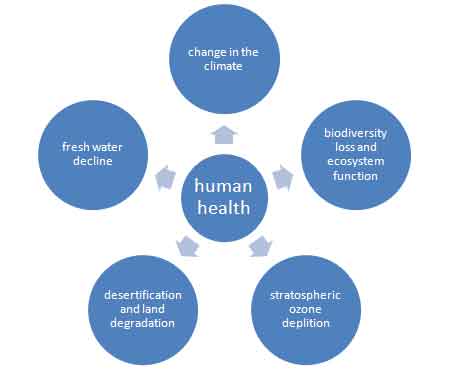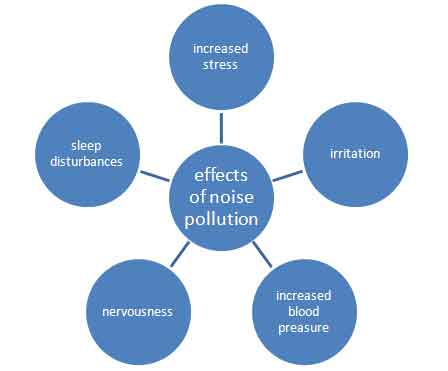POLLUTION PPT and PDF Free Download: Environmental pollution can be defined as a change that is not wished or desired in the chemical, physical, or biological characteristics of any component of the environment (air, water, and soil) which can cause harmful effects on various or many forms of life. Pollution is of different kinds depending on the nature of pollutants and pollutions.
For example, industry, automobiles, thermal power plants, forming nuclear reactors generate distinct types of pollutants causing pollution of air, water bodies and land. Some of these pollutants are biodegradable which decomposes rapidly by natural processes and the other is non-degradable which decompose slowly in the environment. The kinds of air pollution, water pollution, soil pollution, noise pollution, and thermal pollution are explained below with the examples of pollution:
Also Read: Non technical topics
- Gases: Carbon monoxide (CO), excess carbon dioxide (), oxides of sulfur, phosphorous, nitrogen, and carbon dioxide are the poisonous gases which cause death. Excess carbon dioxide causes global warming and green house effect and oxide of sulfur.
- Pesticides and insecticides: These are harmful chemicals and these chemicals enter the body when the leaves or fruits of plant sprayed with the pesticide are consumed by human beings or animals. These pesticides and insecticides even lead to the cause of diseases like cancer.
- Metals: The metals like lead, mercury, zinc, and radioactive elements such as radium, uranium, and thorium enter the body and leads to the poisoning of the body as they are toxic.
- Noise pollution or sound pollution: Noise or sound pollution damages the hearing facilities and temperature affects the usual metabolic processes.
Also See: Marine Pollution PPT and PDF
The below diagram explains about the parameters which affect the human health due to pollution:

Fig1: parameters that damage human health
POLLUTION PPT and PDF Free Download
Air pollution
An atmospheric condition present in concentrations which can cause undesirable effects on man and his environment is called as air pollution. Gaseous pollution include oxides of sulfur, oxides of nitrogen, carbon monoxide, volatile organic compounds etc. Particulate pollutants include smoke, soot, dust, fumes, aerosols, liquid droplets, pollen gain etc. the sources of air pollution are the following:
- Natural sources
- Man made sources
- Natural sources: The natural sources of air pollution are volcanic eruptions, forest fires, sea salt sprays, biological decay etc.
- Man made sources: The man made sources include thermal power plants, industrial units, vehicular emissions, fossil fuel burning, agricultural activities etc.
Also See: Child Labour PPT and PDF
Effects of air pollution: The air pollution has the following effects:
- Effect on living organisms
- Effect on human health
- Effect on plants
- Effect on aquatic life
- Effect on materials
- Effect on living organisms: Air pollution has an adverse effect on living organisms and materials.
- Effect on human health: Suspended particulars can cause damage to lung tissues and diseases like asthma, bronchitis, and cancer.
- Effect on plants: Air pollution affects plants by entering through stomata and destroy chlorophyll and affect photosynthesis.
- Effect on aquatic life: Air pollution mixing up with rain can cause high acidity in fresh water bodies. This affects aquatic life especially fish and some of the freshwater lakes have experienced total fish death.
- Effect on materials: Presence of and moisture can accelerate corrosion of metallic surfaces.
Control of air pollution: The air pollution can be controlled by the following methods:
- By using low sulfur coal in industries
- By using mass transport system and bicycles etc.
- Shifting to less polluting vehicles
- Using non-conventional sources of energy
- Using biological filters and bio-scrubbers
- Planting more trees
Water pollution
Water pollution can be defined as an alteration in physical, chemical or biological characteristics of water.
Sources of water pollution: Water is a required commodity to survive and we need water for bathing, irrigation, drinking, washing, cooking, and for industrial purposes.
We get this water from groundwater sources, rivers, and lakes. The factors responsible for the pollution of groundwater and surface water are explained below:
Groundwater pollution: Septic tanks, industries like textile, chemical, and tanneries; deep well injection, mining etc. are mainly responsible for ground water pollution.
Also See: Ecosystem PPT and PDF
Surface water pollution: The factors which are responsible for surface water pollution are:
- Sewage: Pouring the underground drain to carry off waste water and drains in fresh water bodies like lakes and rivers cause water pollution. This problem is very severe in the cities.
- Industrial effluents
- Synthetic detergents
- Agrochemicals
- Oil
- Waste heat
Effects of water pollution: Around 2.3 billion people globally suffer from distinct diseases. Most of them are diarrheal diseases, typhoid, infectious hepatitis and Para typhoid is also causes.
Control of water pollution: Water pollution can be controlled by the following:
- The water pollution can be controlled by using nitrogen fixing plants to complete the deficiency of the avail of fertilizers.
- By using integrated pest management to decrease the dependency on pesticides.
- Planting trees would decrease pollution and will also reduce and eradicate soil erosion.
Noise pollution
The sound is mechanical energy from a vibrating source. The unpleasant and unwanted sound is called as noise.
Sources of noise pollution: The main sources of noise pollution are various modes of transportation, industrial operations, construction activities and celebrations, electric home appliances.
Causes of noise pollution: It exists mostly in densely populated areas like cities and industrial complexes, railway stations, bus stations, air ports, television, radio, and even kitchen gadgets generate noise. Sound levels are measured in units called decibels. Conservation produces sound at about 40 decibels and so on. The limit that humans can accept is about 110 decibels without pain and damage.
Effect of noise: Noise causes the following effects:
- Interferes with man's communication
- Healing damage
- Physiological and psychological changes
Control of noise pollution: The noise pollution can be controlled by the following:
- Reduction in sources of noise
- Proper oiling will reduce the noise from the machinery
- Planting more tree which has broad leaves
The figure is the diagrammatic representation of the effects of noise pollution:

Fig2: effects of noise pollution
Here we are giving you Pollution PPT with PDF. All you need to do is just click on the download link and get it.
Pollution PPT Free Download
Pollution PDF Free Download
It was all about Free PPT and PDF Download for Pollution. If you liked it then please share it or if you want to ask anything then please hit comment button.
https://studymafia.org/pollution-ppt-and-pdf-free-download/ Sumit Thakur Uncategorized POLLUTION PPT and PDF Free Download: Environmental pollution can be defined as a change that is not wished or desired in the chemical, physical, or biological characteristics of any component of the environment (air, water, and soil) which can cause harmful effects on various or many forms of life.... Sumit Thakur Sumit Thakur sumitsssrt@gmail.com Administrator I am an Indian Blogger. I am passionate about blogging. If you want to ask me anything about blogging then feel free to ask 🙂 Study Mafia: Latest Seminars Topics PPT with PDF Report 2021 
